Dealing with a locked UPVC door can be a frustrating experience, especially when access is urgent. These doors, known for their durability and security, can occasionally become difficult to open due to mechanical issues such as a misaligned lock mechanism or a swollen door frame from weather changes.
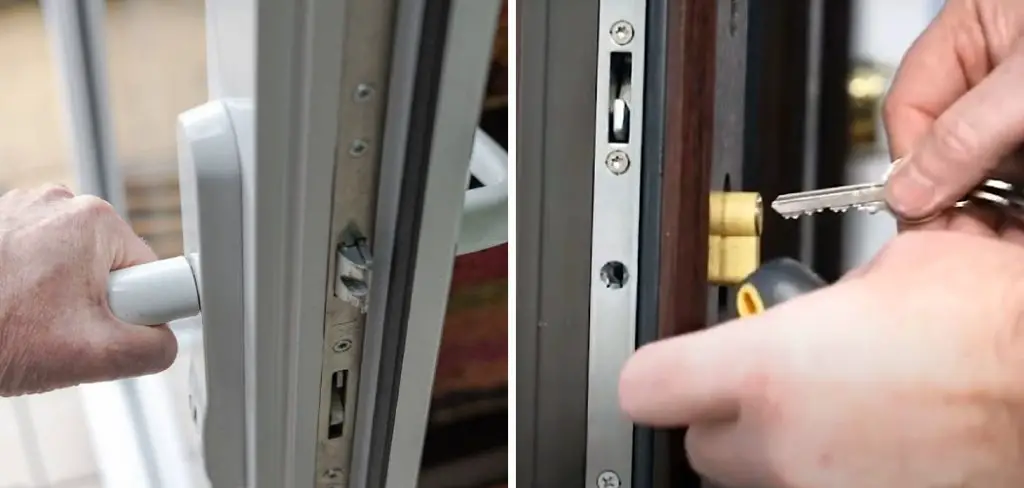
Understanding the common causes and knowing the correct methods to address a lock issue can save time and prevent potential damage to the door. This guide provides simple, effective steps how to remove a locked upvc door, ensuring minimal hassle and maintaining the integrity of your door system.
Common Reasons for Removing a Locked UPVC Door
Removing a locked UPVC door may be necessary for several reasons. One of the primary causes is a malfunctioning lock mechanism. Over time, the components within the lock can wear out or become misaligned, preventing the door from unlocking. Another common reason is weather-induced swelling or warping of the door itself.
UPVC doors may expand in high humidity or during temperature fluctuations, contributing to difficulty in operation. Additionally, lost or damaged keys can necessitate removal if no spare is available. In some cases, the door might be part of a renovation or replacement project, requiring its removal to upgrade or change the entry design. Understanding these common issues can help in deciding the best course of action when faced with a locked UPVC door situation.
Safety Precautions Before Removing a Locked UPVC Door
Before attempting to remove a locked UPVC door, it’s essential to take certain safety precautions to ensure both personal safety and the protection of the door. Firstly, gather the appropriate tools such as screwdrivers, a drill, and protective gloves to prevent any injuries or accidental damage. It’s crucial to assess the door’s condition to determine if it is safe to proceed with the removal; if the frame or glass panels are cracked or compromised, extra caution is necessary.
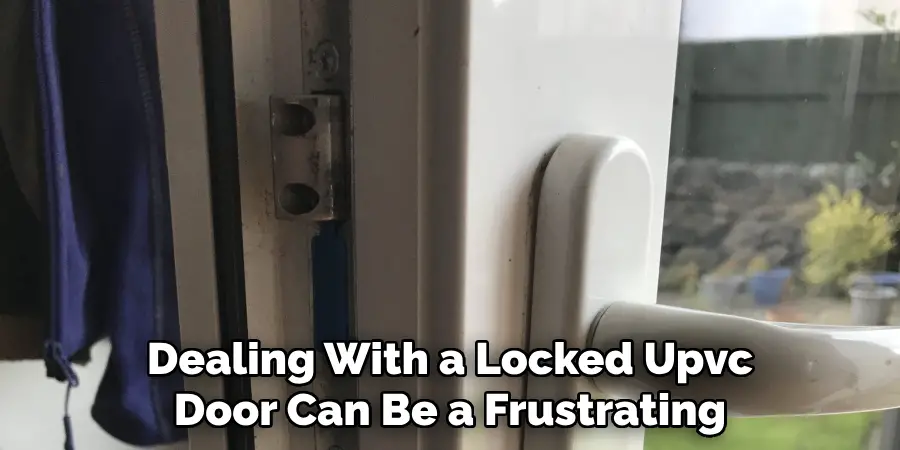
Ensure the area around the door is clear of any obstructions and remove any items that could potentially cause tripping or falling. Additionally, informing others in the vicinity about the removal process can help avoid unexpected interruptions or accidents. Lastly, if you’re unsure about the removal process or encounter any difficulties, consider consulting with a professional locksmith to avoid damaging the door or compromising safety.
Tools and Materials Needed
To successfully remove a locked UPVC door, it’s important to have the right tools and materials on hand. Here is a list of essential items you’ll need:
- Screwdriver Set: A variety of screwdrivers, particularly a Phillips and a flathead, will be needed to remove screws from the door and frame.
- Drill with Bits: In case any screws are particularly stubborn or need to be drilled out, a drill with the appropriate bits is necessary.
- Allen Keys: These are often used to adjust hinges on UPVC doors, so having the right size is essential.
- Protective Gloves: Wear gloves to protect your hands from sharp edges or accidental slips.
- Safety Goggles: Protect your eyes from any flying debris or dust.
- Lubricant Spray: To loosen any stuck parts or locks, a lubricant can be very helpful.
- Wedge or Door Stop: This can help hold the door in position while you work on it.
- Pry Bar: In case the door needs a little extra leverage to open or lift from the hinges.
Ensure all tools are in good condition before starting the removal process, and confirm you have all items ready to avoid interruptions.
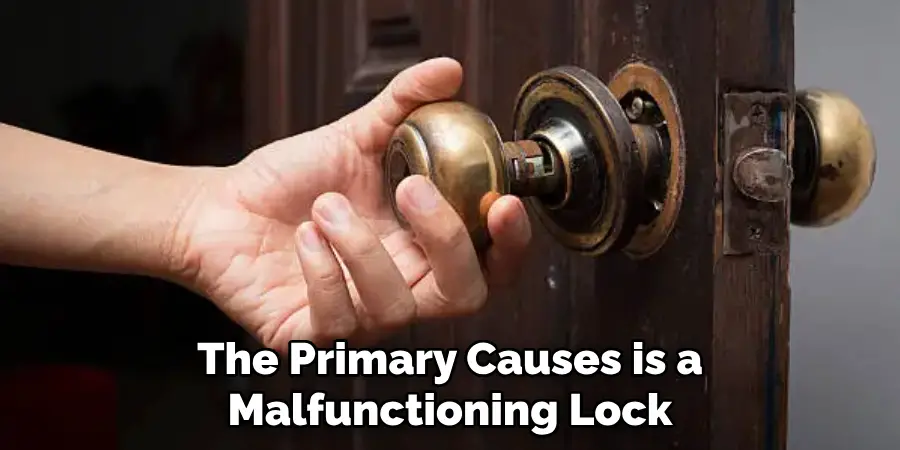
10 Expert Methods How to Remove a Locked Upvc Door
Stuck with a locked UPVC door and feeling frustrated? You’re not alone. Locked or jammed UPVC doors are a common issue for homeowners, DIY enthusiasts, and even locksmiths. These doors offer excellent security and insulation, but when they get stuck, it can disrupt your day. Don’t fret; we’ve compiled ten effective methods to help you unlock that stubborn door. By following these techniques, you’ll gain practical knowledge and the confidence to tackle this problem head-on.
1. Check the Alignment
The most common reason for a locked UPVC door is misalignment. Weather changes can cause the frame to expand or contract, causing misalignment. To fix this, check if the door is in line with the frame. If it isn’t, adjust the hinges to ensure the door fits perfectly. A simple adjustment might be all you need to get the door moving again.
2. Lubricate the Locking Mechanism
If your door is hard to open, there might be a lack of lubrication in the locking mechanism. Use a silicone-based lubricant or graphite powder to lubricate the lock. Avoid using oil-based lubricants as they attract dust and debris, which can worsen the problem over time. Regular maintenance and lubrication can keep your lock functioning smoothly for years.
3. Lift the Door
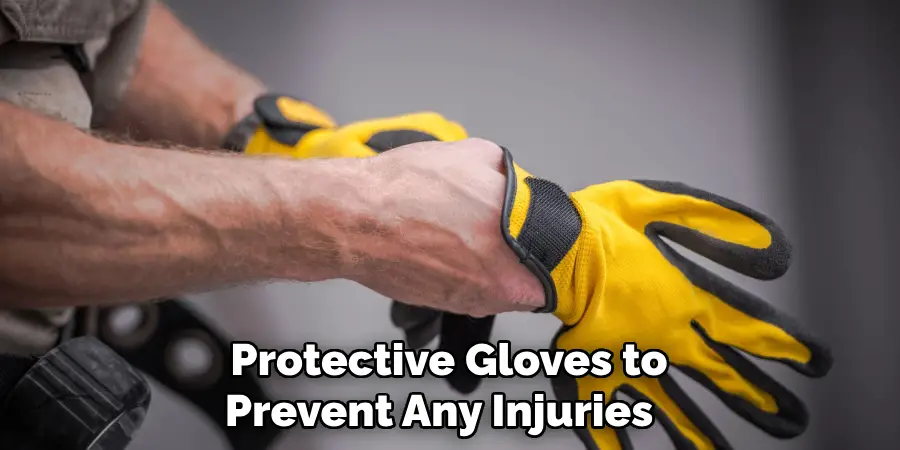
Sometimes, the weight of a UPVC door can cause it to sag over time, affecting the locking mechanism. To counteract this, lift the door gently by the handle while turning the key. If lifting the door makes it easier to unlock, consider adjusting the hinges or using a door-lifter tool to fix the sag permanently.
4. Adjust the Cylinder
A misaligned cylinder could be the culprit behind your locked door. Remove the screws around the cylinder, reposition it, and then tighten the screws back. Ensure that the cylinder is flush with the door surface. A properly aligned cylinder can significantly improve the door’s locking and unlocking process.
5. Use a Credit Card
This classic method can work if the latch is not fully engaged. Slide a flexible card, like a used gift card, between the door and the frame where the latch is located. Wiggle the card while applying pressure to the door. This method exploits the latch mechanism and can free a mildly stuck door.
6. Drill the Lock (Last Resort)
If all else fails and you need immediate access, drilling the lock can be a solution, albeit a last resort. Use an appropriate drill bit to drill through the lock cylinder, which will break the pins inside. This will render the lock unusable, so be prepared to replace it afterward.
7. Call a Professional Locksmith
When in doubt, calling a professional locksmith is always a viable option. They have the tools and expertise to deal with any lock issue efficiently. A locksmith can also provide insights into preventing future problems and suggest upgrades for better security.
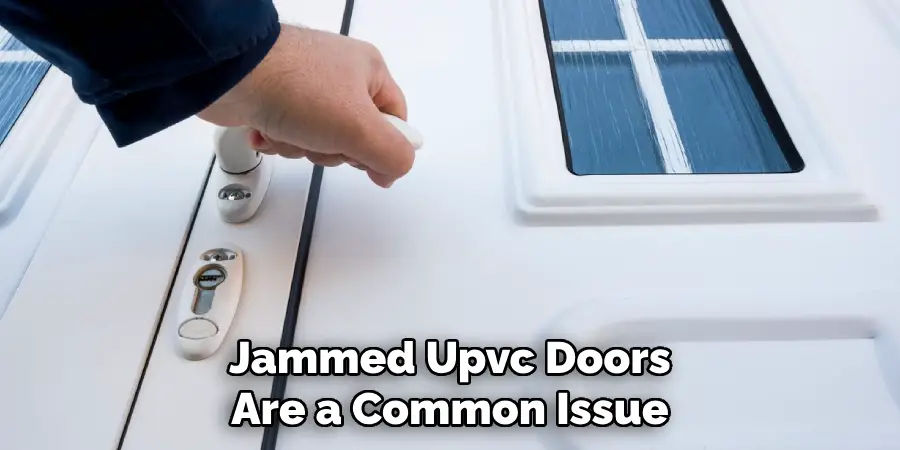
8. Check the Weather Stripping
Sometimes, a door can get stuck due to swollen weather stripping. Check if the weather stripping is causing the door to jam. If so, consider replacing it with a thinner strip or trimming the current one slightly to ensure a snug but not tight fit.
9. Tighten Loose Screws
Loose screws in the door or frame can cause alignment problems, leading to a stuck lock. Inspect the door and frame, and tighten any loose screws you find. This simple fix can often resolve a myriad of door issues.
10. Replacing the Locking Mechanism
If the locking mechanism is old or damaged, it might be time for a replacement. Remove the faulty mechanism and install a new one following the manufacturer’s instructions. This might require some DIY skills, but it’s a straightforward process with the right tools and guidance.
Things to Consider When Removing a Locked UPVC Door
When planning to remove a locked UPVC door, there are several important factors to keep in mind to ensure a smooth and successful removal process. First, assess the condition of the door and the lock. If the door appears significantly damaged or warped, it might influence your approach or necessitate specific tools. Next, consider the potential for damage during removal; gentle handling is crucial to prevent unsightly marks or additional issues.
It’s also important to understand the door’s locking mechanism thoroughly to avoid unnecessary force that might worsen the problem. Additionally, your safety should be a priority—ensure you’re wearing protective gear and taking proper precautions, especially when using tools such as drills or pry bars. Lastly, take into account the possibility of needing to replace parts or the entire locking mechanism, as some methods may render components unusable. By keeping these considerations in mind, the removal process can be more efficient and less stressful.
Conclusion
Dealing with a locked UPVC door can be frustrating, but with the right approach and techniques, it doesn’t have to be an insurmountable challenge. By understanding the common causes of door jams, such as misalignment, lubrication issues, and hardware malfunctions, you can take proactive steps to address these problems. The methods outlined in this guide provide practical solutions that range from simple adjustments to more involved interventions, ensuring you have a variety of tools at your disposal depending on the severity of the issue.
Remember, maintaining your door and its components through regular inspections and upkeep can prevent many of these issues from arising in the first place. So, there you have it – a quick and easy guide on how to remove a locked upvc door.
